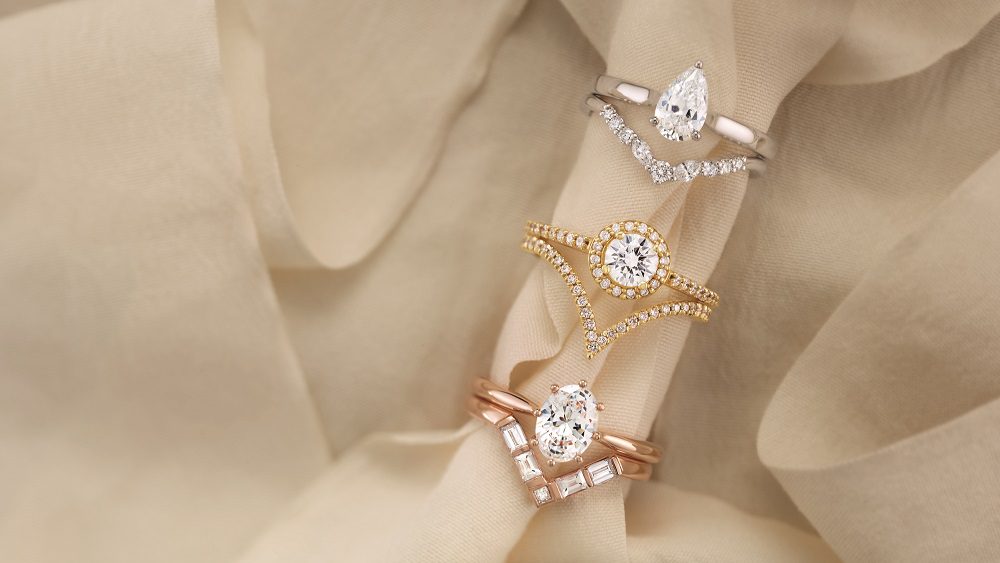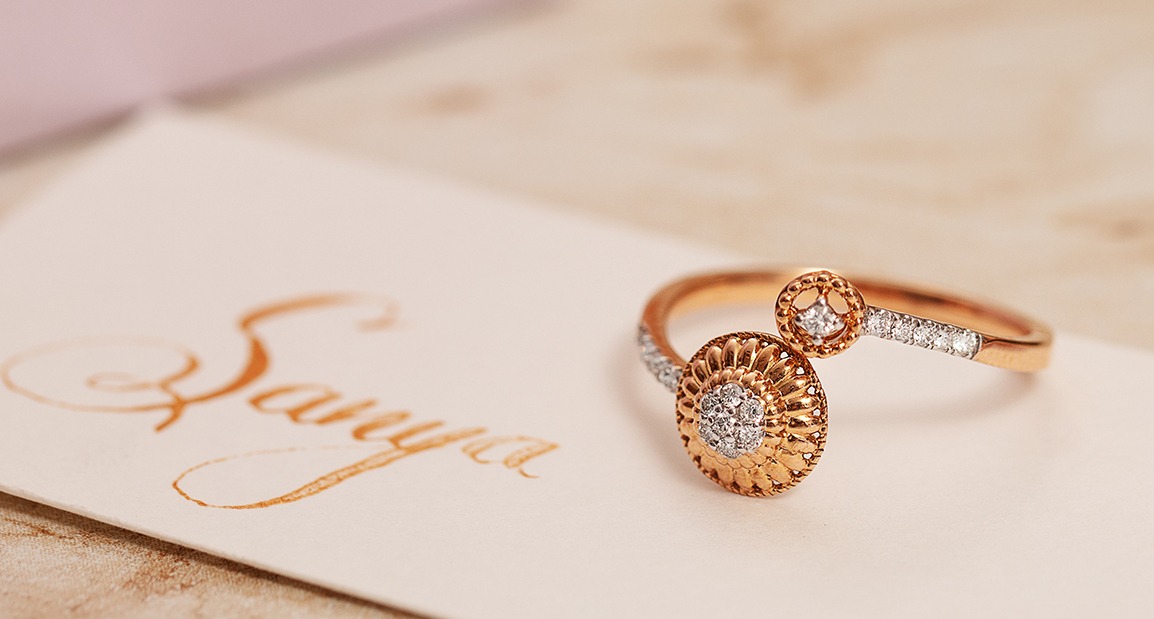The choice of metal for your engagement ring is a pivotal decision, contributing significantly to its overall aesthetic and style. Among the timeless options, gold stands out for its warmth, durability, and classic appeal. This article is a guide to selecting the right gold color for your engagement ring, offering insights into the factors that influence your decision and how to harmonize precious metals with the brilliance of your chosen diamond.
Tips on Selecting The Right Gold Color for a Perfect Engagement Ring

- Consider Personal Style:
- Before diving into the technicalities, reflect on your personal style. Do you lean towards classic elegance, contemporary chic, or vintage allure? Your style preferences can guide you towards the gold color that best complements your taste.
- Skin Tone Matters:
- Skin tone plays a crucial role in determining the most flattering gold color. Warm-toned individuals often find yellow and rose gold to be particularly complementary, while cooler tones may lean towards white gold or platinum.
- Pairing with Existing Jewelry:
- If you plan to wear your engagement ring alongside existing jewelry, consider the color of those pieces. Harmonizing the gold color with your current collection creates a cohesive and polished look.
- Gemstone Considerations:
- If your engagement ring features colored gemstones, consider their hues. Certain gold colors enhance specific gemstone colors, creating a harmonious and visually appealing composition.
How Your Engagement Ring’s Metal Affects Your Diamond’s Color
The choice of metal for your engagement ring is a pivotal decision that goes beyond aesthetics—it significantly influences the perceived color of your diamond. The metal setting acts as a backdrop, reflecting its own hues onto the diamond and impacting its overall appearance. Here’s an in-depth exploration of how your engagement ring’s metal affects your diamond’s color:
- Yellow Gold Accentuates Warm Tones:
Impact on Diamond Color: Yellow gold tends to enhance the warmth of diamonds. When paired with a yellow gold setting, diamonds with lower color grades may appear warmer and more subdued. This can impart a vintage-inspired or romantic aesthetic to the overall look of the ring.
Ideal Diamond Matches:
- Yellow gold complements diamonds in the lower color grades (J and below).
- Fancy colored diamonds, such as those with a yellow or brown hue, harmonize well with yellow gold.
- White Gold and Platinum for a Crisp Look:
Impact on Diamond Color: White gold and platinum provide a neutral and cool-toned setting that can enhance the brilliance of diamonds. These metals offer a crisp and clean backdrop, allowing colorless and near-colorless diamonds to shine without interference from warm tones.
Ideal Diamond Matches:
- White metals are particularly suitable for diamonds in the higher color grades (D-I).
- They create a striking contrast with colorless diamonds, making them appear more brilliant.
- Rose Gold for a Romantic Aura:
Impact on Diamond Color: Rose gold, with its subtle pink undertones, imparts a warm and romantic aura to diamonds. The blush hue of rose gold can soften the appearance of a diamond’s color, adding a touch of vintage charm and femininity.

Ideal Diamond Matches:
- Rose gold works well with diamonds across various color grades.
- It can enhance the beauty of diamonds with warmer tones, offering a cohesive and harmonious look.
- Consideration for Two-Tone Designs:
Impact on Diamond Color: Two-tone engagement ring designs, combining different metal colors, add a layer of complexity. The interplay of metals can create unique visual effects, emphasizing certain aspects of the diamond’s color.
Ideal Diamond Matches:
- Two-tone designs offer versatility, allowing you to experiment with various diamond color grades.
- They provide an opportunity to customize the appearance based on personal preferences.
- Contrast and Brilliance:
Impact on Diamond Color: The contrast between the metal setting and the diamond influences the perception of brilliance. A white metal setting can create a strong contrast, making the diamond appear more vibrant and dynamic.
Ideal Diamond Matches:
- Diamonds with higher color grades benefit from the contrast provided by white metals.
- The enhanced brilliance contributes to a visually striking and captivating engagement ring.
- Personal Preferences:
Impact on Diamond Color: Ultimately, personal preferences play a significant role in the choice of metal. Some individuals prefer the warmth and vintage charm of yellow or rose gold, while others are drawn to the modern and sleek look of white gold or platinum.
Ideal Diamond Matches:
- Consider your personal style and the aesthetic you envision for your engagement ring.
- Try different metal options to see which one resonates with your unique taste and preferences.
Why Do Precious Metals Change the Look of a Diamond?
- Reflection of Color:
- The metal surrounding a diamond reflects its color onto the stone. For example, yellow gold may impart a warm tint, while white metals can enhance the diamond’s natural colorlessness.
- Contrast and Brilliance:
- The contrast between the metal and the diamond influences the perception of brilliance. A white metal can create a striking contrast, making the diamond appear more brilliant and dynamic.
- Personal Preferences:
- Different metals appeal to different sensibilities. Some individuals prefer the warmth and vintage charm of yellow gold, while others are drawn to the modern and sleek look of white gold or platinum.
How to Pair a Precious Metal With Your Diamond
- Consider Diamond Color Grade:
- For diamonds in the colorless to near-colorless range (D-I), white gold or platinum can enhance their inherent brilliance. For diamonds with warmer color grades (J and below), yellow or rose gold can complement and soften the appearance.
- Experiment with Combinations:
- Try on rings with various metal and diamond combinations to see which one resonates with your preferences. The hands-on experience of seeing different pairings can guide you towards the perfect choice.
- Customization Options:
- Many jewelers offer customization options, allowing you to choose the metal type that best suits your vision. Explore these options to create a truly personalized engagement ring.
Conclusion
Selecting the right gold color for your engagement ring is an art that balances personal style, skin tone, and the characteristics of your chosen diamond. Whether you opt for the warmth of yellow gold, the crispness of white gold, the romance of rose gold, or the enduring elegance of platinum, each choice imparts a unique character to your symbol of love. Let this guide be your companion as you embark on the journey of choosing the perfect gold color for an engagement ring that reflects your individuality and captures the essence of your commitment.